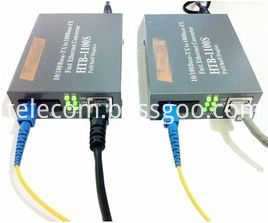How passive PAW sensors work
SAW is an elastic wave whose energy concentrates on the surface of the medium. In a strict sense, it refers to waves of various modes propagating along the surface or interface. Different boundary conditions and propagation medium conditions can stimulate different modes of SAW. Commonly used in SAW are Rayleigh waves, horizontal shear waves, lamb waves, surface shear waves, and music waves. Different models of SAW have different sensitivities to external physical and chemical quantities according to their characteristics. For example, Rayleigh waves are sensitive to mechanical quantities, but they are insensitive to liquid surface media due to the vertical component of their particle vibrations; horizontal shear waves and music waves are sensitive to liquids due to the absence of vertical vibration components. The most common mode of fluctuation for SAW is Rayleigh wave, so the discussion of Rayleigh waves is often only expressed in terms of "SAW". Compared with electromagnetic waves, SAW has the following characteristics: (1) Lower propagation speed and shorter wavelength. The size of the SAW device is much smaller than that of the corresponding electromagnetic wave device, which can greatly reduce the size and weight of the device, and contribute to the ultra-small size of the electronic device. (2) Due to the slow propagation speed of SAW, the time-varying signal can be completely presented on the surface of the crystal substrate, which is easy to inject, extract and transform the signal. (3) SAW is an elastic wave propagating on the surface of the crystal. It does not involve the migration process of electrons inside the crystal. It has strong radiation resistance and a large dynamic range. (4) SAW devices are manufactured using single crystal materials and planar processes with repeatability and consistency for easy mass production. At present, most SAW devices use Rayleigh waves as the implementation path. Rayleigh waves are acoustic waves propagating along the surface of a medium under semi-infinite substrate boundary conditions, while Rayleigh waves are non-dispersive waves, that is, wave speed and frequency are independent. The motion of the particle of the Rayleigh wave is an elliptical polarization with the displacement in a radial plane, ie a plane perpendicular to the surface. In an anisotropic solid, it is composed of both longitudinal vibration parallel to the propagation direction and transverse vibration perpendicular to the surface and propagation direction. The phase of the two is 90 degrees out of phase, and the amplitude exhibits rapid attenuation with depth. As shown in the figure, the amplitude of the particle displacement in SAW decays exponentially with depth, and the Rayleigh wave energy is concentrated in the depth range of 1~2 wavelengths. The sensitive components in the SAW sensor are passive and do not need to be coupled to the desired power supply as in a typical wireless IC card. It is a true passive sensor. Passive SAW sensors represent a new development in SAW sensors and are a new type of sensor developed after sensors such as ceramics, semiconductors and fiber optics. These sensors can be sensitive to various factors such as electricity, heat, force, sound, light, chemistry and biology. Most of the sensors work as RF signals and do not require a wired connection. Therefore, they are uniquely advantageous in measurement. . In addition, SAW sensors have the advantages of small size, low price, high precision, high sensitivity and high resolution, and the integrated circuit process can be compatible with its manufacturing process. The sensor and signal processing circuit can be fabricated on the same chip, which is not only reliable. It is reproducible and suitable for mass production. It is a promising sensor.
Fiber optic transceivers, is a short twisted-pair electric signals and optical signals over long distances to swap the Ethernet transmission media conversion unit, in many places also known as the photoelectric Converter (Fiber Converter). The product is generally used in the actual network environment where the Ethernet cable cannot be covered and the optical fiber must be used to extend the transmission distance. For example, high definition video image transmission of monitoring security engineering; It has also played a big role in helping to connect the last kilometer of fiber optic lines to the WAN and beyond.
Fiber Optic Media Converter, Fiber Media Converter, Optical Fiber Transceiver NINGBO YULIANG TELECOM MUNICATIONS EQUIPMENT CO.,LTD. , https://www.yltelecom.com
